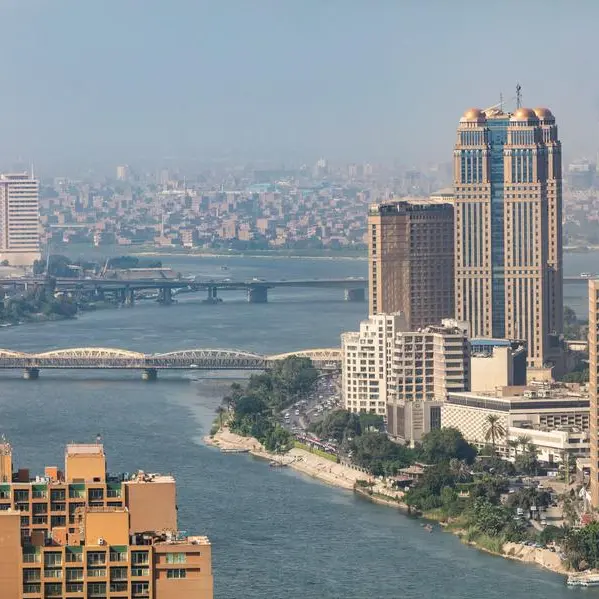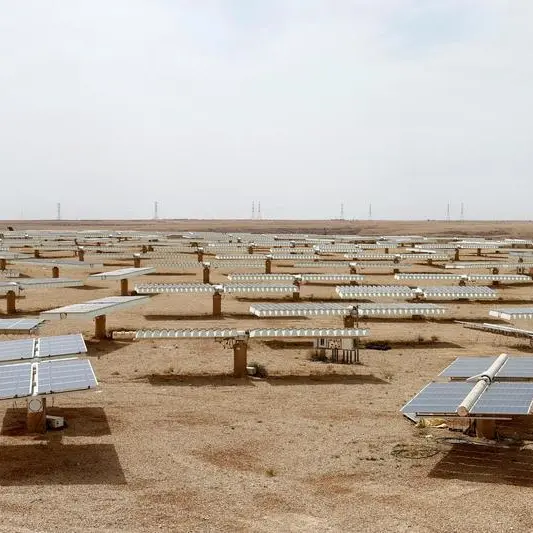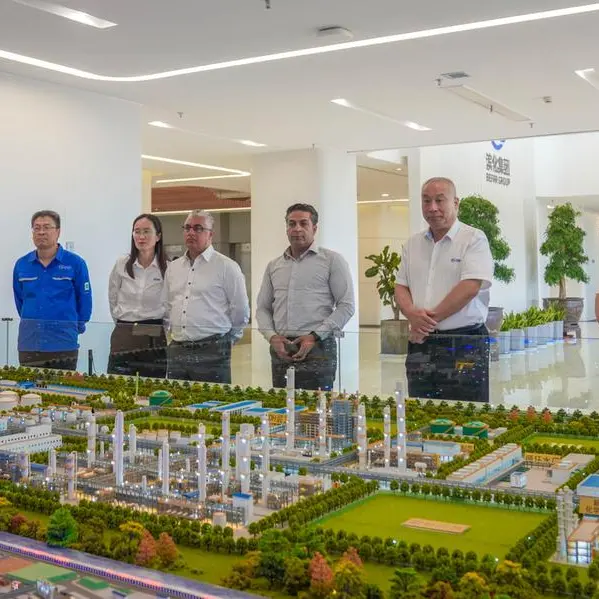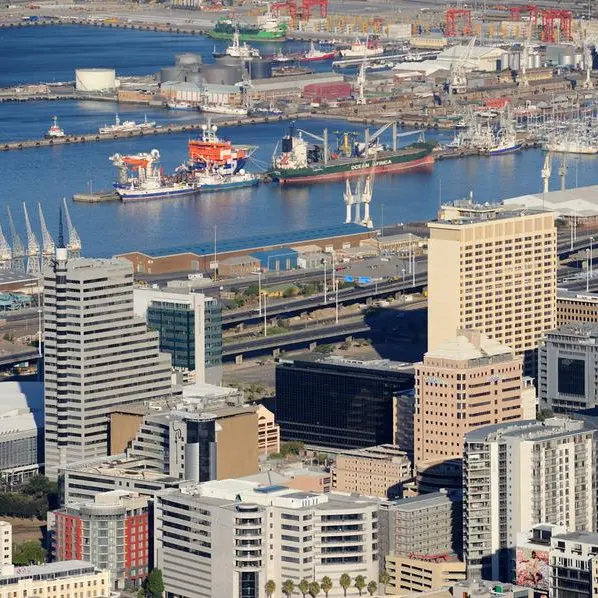PHOTO
Repairman reaching for laptop keyboard while repairing at recycling centre.
HP, the US-headquartered global technology leader, has established ambitious targets to combat climate change and promote sustainability. The company aims to achieve net zero greenhouse gas (GHG) emissions across its value chain by 2040 while interim targets include reducing value chain GHG emissions by 50 percent by 2030 (compared to 2019 base line), and achieve 75 percent circularity for products and packaging by 2030.
In an exclusive interview with Zawya Projects, Peter Oganesean, Managing Director of HP Middle East and Africa, highlighted the company's significant strides towards these ambitious goals.
“We are proud to say that in our recent Sustainable Impact Report, we reported a 27 percent reduction in GHG emissions across our value chain from our 2019 baseline. HP’s carbon footprint was 19,764,400 tonnes of CO2e in 2023.”


Oganesean acknowledged the challenges posed by waste management and ocean-bound plastic, but emphasised HP's commitment to addressing these issues through responsible disposal, recycling initiatives, and innovative partnerships.
He underlined that sustainability is not just a goal but a core business strategy for HP best exemplified by growth in the sustainable revenue in 2023.
“Our sustainable revenue in 2023 represented more than 60 percent of total revenue, reported in accordance with the Corporate Knights Sustainable Economy Taxonomy, which defines sustainable revenue as revenue from products and services that help reduce environmental impacts,” observed Oganesean.
The HP executive said the company engages with stakeholders, including investors and customers, to communicate its climate goals and progress to ensure that financial performance is balanced with environmental commitments.
“Only with clear and transparent sustainability reporting and commitments, can we attract both prospective investors and customer support,” he said. “Through our focus on Sustainable Impact, we capitalise on what we do best while anticipating and preparing for the next wave of global challenges.”
Excerpts from the interview:
What are some of the biggest challenges faced by HP in implementing its climate action strategy?
HP faces several challenges in implementing its climate action strategy. One challenge is waste management and reducing and recycling to address environmental pollution. Reducing risk to soil and water resources from potential contamination and hazards is vital.
To combat this, HP emphasises responsible disposal of electronic waste, packaging, and manufacturing waste throughout all elements of operations. To improve the impact of metal use, HP is increasing the use of post-consumer recycled content in certain product lines and collaborating with other organisations through our membership of the Circular Electronics Partnership to enhance the sourcing of recycled steel.
Another challenge for companies is tackling ocean-bound plastic (OBP). HP’s product portfolio requires a diverse range of materials, including plastics, but to contribute to the circular economy, we created a programme in Haiti, in partnership with The First Mile, for a self-reliant OBP supply chain that also provides income and education opportunities locally. As a result, we have used 2,305 tonnes of OBP in our products since 2016 — equivalent to nearly 182 million 16.9-ounce (500 ml) bottles — preventing this material from reaching oceans or waterways.
When it comes to packaging, our strategy focuses on eliminating unnecessary materials, using sustainable fibre and recycled plastics, and prioritising high recycled content. HP also offers take-back services and regularly updates its ‘Recycle your HP packaging’ guide to promote responsible packaging disposal.
How do you help your customers and suppliers be more accountable on climate?
Since 63 percent of our emissions occur in our supply chain, HP actively promotes climate accountability for both its customers and suppliers. We engage closely with suppliers, encouraging them to set science-based emission reduction targets. Initiatives like Supplier Sustainable Impact Scorecards drive performance and align supplier actions with HP’s sustainability goals. Over one-third of HP’s carbon footprint stems from product energy use, so we continually enhance product energy efficiency.
Additionally, HP offers innovative service-based solutions to help customers reduce their environmental impact. We design products with energy efficiency in mind, minimising energy consumption during use and benefiting both the environment and customers.
By fostering supply chain partnerships, supporting GHG emissions-reduction projects, and encouraging renewable energy adoption, HP reinforces our sustainability efforts.
How do you ensure transparency and accountability in your climate action reporting?
For transparency with our vendors, HP collaborates with a global network of product reuse and recycling vendors and publishes a detailed list of these sites annually. This transparency allows stakeholders to understand the locations and practices of HP’s recycling and reuse partners.
When vendors are identified with non-conformances, we take decisive action. These vendors must submit corrective action plans within 30 days and address issues within 90 days. In extreme cases, HP ceases business with vendors lacking transparency or unwilling to make necessary changes. This approach ensures accountability and drives improvements across the supply chain.
We also conduct audits of vendor facilities through ERM (Environmental Resources Management) feeding into our ESG reporting and strategy. These audits evaluate efforts to improve performance, covering aspects like environmental impact, safety, and compliance. In 2023, HP audited 30 vendor facilities across 19 countries, representing 19 percent of reuse facilities and 36 percent of recycling facilities.
As a result of these initiatives, we are proud to boast a triple “A” score from CDP (Carbon Disclosure Project). These scores span climate, forests, and water security and have been consistently achieved for five consecutive years. Additionally, HP is recognised as a CDP Supplier Engagement Leader, emphasising its active role in driving sustainability across the value chain.
What new investment opportunities arise from HP’s climate action strategy?
HP’s climate action strategy presents exciting investment opportunities across various domains. By allocating $1.58 billion to ongoing product development in 2023, HP aims to create transformative and disruptive technologies for the future. A majority of our R&D spending focuses on inventions and product development slated for release in the next one to two years.
From this research, HP is able to invest in new business creations (including 3D printing and microfluidics) and technologies that will mature over the following three to seven years. These investments yield promising applications for more sustainable outcomes in industry and healthcare.
HP also collaborates with NGOs like WWF and engages through the HP Sustainable Forests Collaborative (SFC) to invest in deforestation impacts from customer paper use. Our forest positive strategy underscores continued investments in forest restoration, protection, and other initiatives. Additionally, HP aims to counteract deforestation related to non-HP paper used in its products and print services by 2030.
(Reporting by Anoop Menon; Editing by SA Kader)
Subscribe to our Projects' PULSE newsletter that brings you trustworthy news, updates and insights on project activities, developments, and partnerships across sectors in the Middle East and Africa























